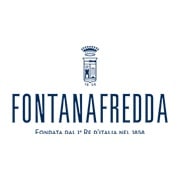In the vast universe of oenology, few things evoke the sense of mystery and fascination like wine aging. It’s a process that transforms grape nectar into an even more complex beverage, rich in nuances and unique characteristics. In this blog, we will explore the requirements for proper aging, the factors that influence this process, and some of the longest-lived wines that have enchanted connoisseurs for generations.
Requirements for Proper Aging
Wine aging is a delicate art that requires patience and care. Not all wines can undergo this process and must possess some fundamental requirements to age properly over the years.
Quality of Grapes
Good aging begins with grape selection. Only the finest grapes, harvested at the right time and from well-tended vineyards, have the potential to develop the complexity and structure necessary to withstand the passage of time.
Wine Structure
Wines intended for aging must have a good structure, which includes a balance of acidity, tannins, and alcohol. These elements act as the foundation on which aromas and flavors develop during the aging process. Red wines with high tannin content, such as Cabernet Sauvignon and Nebbiolo, and some white wines rich in acidity, like Chardonnay, are often chosen for aging.

Bottle and Cork
The choice of bottle and cork is crucial to ensure that the wine ages properly. Dark glass bottles protect the wine from light, while a quality cork ensures a tight seal that prevents premature oxidation. Keeping bottles horizontal keeps the cork moist and prevents air from coming into contact with the wine through the cork, reducing the risk of deterioration.
Storage Environment
Wine should be stored in a cool, dark, and vibration-free environment. Conditions such as constant temperature and moderate humidity are essential for preserving the freshness and vitality of the wine over the years. The temperature should be around 12-16°C, with a relative humidity of 70-80%. Extreme temperature variations and exposure to light can damage the wine and compromise the aging process.
Factors Influencing Wine Aging
Many other factors can influence how a wine ages. Among the most significant are grape variety. Some grape varieties are more predisposed to aging than others. For example, wines made from Cabernet Sauvignon, Nebbiolo, Sangiovese, and Riesling are known for their ability to improve with age.
Terroir, which includes the soil, climate, and sun exposure of a vineyard, has a significant impact on the development and structure of the wine. Vineyards located in well-drained soils and with a moderate climate tend to produce wines more suitable for aging.
The winemaking process can affect the longevity of the wine. For example, the use of prolonged maceration and aging in wooden barrels can contribute to the stability and complexity of the wine over time.
Each vintage has its own climatic peculiarities that influence the quality of the grapes and, consequently, the aging potential of the wine. Some years can produce wines destined to age magnificently, while others may be more suitable for young consumption.
Best wines for aging
Many wines have gained legendary reputations for their extraordinary aging ability. Among the most famous are:
Barolo
Produced in the Piedmont region of Italy, Barolo is an iconic red wine made from Nebbiolo grapes. Thanks to its tannic structure and aromatic complexity, Barolo can age for decades, developing tertiary nuances of leather, tobacco, and earth.

Bordeaux
Red wines from the Bordeaux region in France, particularly those produced in thePauillac, Saint-Julien and Margaux denominations, are known for their exceptional aging ability. The best vintages can mature for many decades, offering an extraordinary balance of fruit, tannins, and acidity.

Mosel Riesling
Rieslings produced along the Mosel River in Germany are famous for their longevity and complexity. These aromatic white wines can develop elegant notes of petrol and honey with aging, offering unique sensory experiences.

Wine aging is a fascinating journey that allows us to explore the past through taste and aroma. With the right attention and appropriate conditions, wines can transform into precious treasures, memories of past vintages that continue to enchant and delight connoisseurs around the world.














